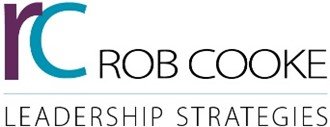
Taking on the New Executive Position
Congratulations on your new appointment. This is a great opportunity and the actions you take during your first few months will have a major impact on your ultimate success in the new role. Transitions are pivotal times, in part because they are when everyone expects change to occur. They’re also times of great vulnerability, when new leaders lack established working relationships and detailed knowledge of their new roles. If you fail to build momentum during your transition, you will face an uphill battle from then on.
You may be coming into this role from elsewhere and have little knowledge of the function you have inherited. You may have heard rumours, had some interaction or you may have been in another role within the Organization. In most cases, you are being brought in to make changes whether to improve service quality and productivity or to deliver better outcomes. Regardless of where you have come from I would ask “do you really know enough to know where the greatest opportunities for change are or what the best solutions would be?”
While your boss will have high expectations for you, it would be unrealistic for them to expect immediate results and they need to recognize that it will be more important for you to get it right. You have a window of opportunity during which time you don’t own the current problems and performance and you should use the window to truly explore what you have inherited.
Being new in the position you likely have limited knowledge and should exercise great caution as you strive to get your bearings. Because expectations for you are high and your time is precious, you must be an active learner. This means organizing to learn as efficiently as possible everything you need to learn about your new role. Plan early on to focus on three distinct types of learning: technical, political and cultural. Technical learning means understanding the work of the group you have inherited including goals, desired outcomes, services, processes and people. Small “P” political learning means assessing how decisions are made, understanding who is most influential and identifying key sources of power. Cultural learning means understanding your new organization’s norms and values, its accepted ways of working and all the habits that make its character unique. In a recent survey of over 600 new leaders over 70% indicated that it was a lack of cultural understanding and cultural fit that was the key contributor to their failure.
The time between taking on the new role and being held fully accountable for results provide you with a unique window of time to dig deep and find out what is working well and not so well, who the star players are, and what the key challenges and threats are. I suggest you use this time to personally collect and document some key information through interviews with members of your team across the organization.
The following a simple 120 to 180-day plan that will provide you with a template for creating a unique plan for your start-up in the new position.
Phase I: (estimated at 0 to 60 days)
Establish start-up plans for learning about the new role.
If you are new to the organization, learn about the business and the technical, cultural and political realities of the organization you are going to lead.
If you are being promoted into a new leadership role within the organization learn about how this role will be different from the ones you have held previously.
Proactively collect data personally and listen carefully to what people throughout your organization are saying. Hold one-on-one interviews and learn:
The scope and nature of goals of the business units reporting to you
The impediments and challenges leaders have in achieving these goals
The elements of culture that are contributing to high performance and those that are inhibitors
The things people are hoping you don’t change and what they hope you do change
The biggest challenge to improving service quality, performance and productivity
The greatest frustrations that people have about how the organization is currently run
Establish leadership presence and build trust and credibility in the new organization by being visible and open, asking a lot of questions
Solicit expectations from key stakeholders
Build one-on-one relationships with direct reports and assess their support for you in your new role
Identify strategic priorities
Identify early wins
Start to build relationships with colleagues and key stakeholders
Phase II: (estimated at 60 to 120 days)
Confirm stakeholder expectations
Establish initial leadership and business performance goals
Identify ‘stars’ and under-performers on the leadership team
Confirm and consolidate information on organizational performance and capability (people, process and technology) as well as strengths and weaknesses
Confirm priorities for organizational realignment
Confirm your new executive team
Take action to deal with low performers
Develop strategies and actions for early wins and ‘obvious changes’
Build alliances and rapport, build credibility with colleagues and key stakeholders
Phase III: (estimated at 120 to 180 days)
Define a personal vision for your organization and engage others to make it a shared vision.
Build the new leadership team
Establish goals with direct reports
Communicate clear expectations across the organization
Ensure clarity and alignment of direction (vision, goals, strategies)
Foster a motivational and inspirational environment
Ensure early wins are achieved
Refine leadership and business goals
Success in accomplishing the above won’t guarantee a smooth transition. Even the best-laid plans can go awry. But care in planning and carrying out a transition can substantially improve your chance of success–and your chance to get opportunities to make further transitions in the future.
About the Author: Rob Cooke is a leadership advisor, strategist and coach. Drawing on a strong background in business and organizational development, Rob utilizes his extensive consulting experience to help leaders address emerging challenges, seize opportunities and execute approaches to achieve personal, leadership and business goals.
June 16, 2017 | Leadership Development
